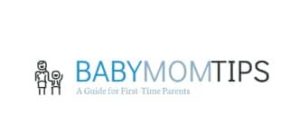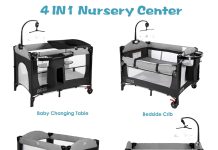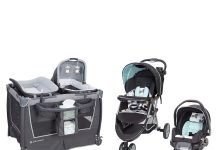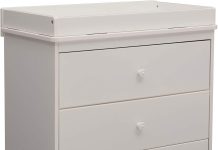Are you a new parent or caregiver worried about keeping your baby safe during diaper changes?
We understand your concerns, and in this article, we will provide helpful tips and suggestions on preventing your little one from falling off the changing table.
With a few simple steps and precautions, you can create a secure and comfortable environment for you and your baby during this daily ritual.
Read to discover practical solutions and gain peace of mind during diaper changes.
Review contents
Understanding the Risks
The dangers of falling off a changing table
As a parent, it’s essential to be aware of changing tables’ risks and potential dangers. One of the primary risks is the possibility of your baby falling off the changing table. Babies are naturally curious and can wriggle and squirm, making it easy to roll off the table accidentally. The height of most changing tables can pose a significant risk, potentially leading to severe injuries if a fall occurs.
Common injuries from falling off a changing table
Falling off a changing table can result in various injuries for your baby. Head injuries are especially concerning, as the impact of a fall can lead to concussions or other severe head traumas. Other common injuries include broken bones, sprains, cuts, and bruises. A seemingly harmless fall can seriously affect your baby’s safety and well-being. Understanding these risks is crucial to take proactive measures to prevent accidents from happening.
Choosing a Safe Changing Table
Sturdy construction
When selecting a changing table, one of the critical factors to consider is its construction. Look for a changing table that is sturdy, stable, and made from durable materials. A well-built changing table will offer better support and minimize the risk of wobbling or collapsing. Consider the table’s weight capacity to ensure that it can safely hold your baby’s weight. Additionally, check for any sharp edges or protruding parts that could potentially cause harm to your baby.
Safety features to look for
In addition to sturdy construction, choosing a changing table with important safety features is essential. Look for a table with raised sides or guardrails to prevent your baby from rolling off. Some changing tables also come with safety straps that can secure your baby in place, adding an extra layer of protection. The presence of safety certification labels, such as those from ASTM International, is a good indicator that the table meets safety standards. Prioritizing these safety features will significantly reduce the risk of accidents while using the changing table.
Preparing the Changing Area
Selecting an appropriate changing location
Finding an appropriate location for your changing table is crucial to minimize potential hazards. Choose a room or area with a clean, flat surface where the changing table can be placed securely. Avoid placing the table near windows, electrical outlets, or other dangers. Selecting a dedicated space for diaper changes ensures that you have a safe and reliable area to work in.
Clearing the area of hazards
Before placing your baby on the changing table, ensure the surrounding area is free from hazards. Remove any fragile or dangerous objects within your baby’s reach. Keep cleaning products, sharp objects, and cords securely out of reach. Creating a clutter-free and hazard-free zone allows you to focus on the task without worrying about potential accidents.
Using Safety Straps
Understanding the purpose of safety straps
Safety straps are an essential feature of a changing table, providing your baby with an additional layer of security. These straps are designed to keep your baby in place while changing their diaper. By securing your baby with safety straps, you can prevent them from rolling or slipping off the table, reducing the risk of falls and injuries. Understanding the importance and functionality of safety straps allows you to make the most of this safety feature.
Properly secure your baby with safety straps.
To properly secure your baby with safety straps, always ensure they are securely fastened around your waist or torso. Ensure the straps are snug but not too tight, allowing for comfortable movement and breathing. Regularly check the straps for any signs of wear or damage and replace them if necessary. Utilizing safety straps correctly reduces the chances of accidental falls, providing peace of mind during diaper changes.
Keeping One Hand on Your Baby
The importance of constant supervision
Constant supervision is vital when changing your baby’s diaper to prevent accidents and ensure their safety. By keeping one hand on your baby at all times, you can effectively minimize the risk of falls or any unexpected movements. This level of constant supervision allows you to quickly respond to any potential dangers or situations that may arise during the diaper-changing process.
How to position yourself and your baby
Positioning yourself and your baby on the changing table is crucial to maintaining stability and safety. Stand facing the changing table with your feet shoulder-width apart for better balance. Place your baby on the table with their head closest to your body, ensuring they are well-supported and comfortable. By positioning yourself and your baby stably and securely, you can confidently focus on the task and reduce the risk of accidents.
Organizing Diapering Supplies
Avoiding the need to step away from the table
Keeping all your diapering supplies within arm’s reach is essential to avoid the need to step away from the changing table, even for a moment. When you step away, you create the possibility of accidents and falls. Before beginning the diaper change, gather all the necessary supplies, such as diapers, wipes, and rash cream, and keep them within easy reach. This gives you everything you need, minimizing distractions or potentially hazardous situations.
Using organizers and storage solutions
Organizers and storage solutions can help keep diapering supplies neat, organized, and easily accessible. Consider using baskets, dividers, or shelves near the changing table to store all the supplies in an orderly manner. This saves time and effort when searching for items and ensures that everything remains within reach while keeping the overall area clutter-free. By implementing effective organization strategies, you can streamline the diaper-changing process and maintain a safe environment for your baby.
Staying Focused and Avoiding Distractions
Preventing accidents caused by distractions
Staying focused and avoiding distractions while changing your baby’s diaper is crucial. Distractions can divert your attention from your baby and increase the risk of accidents. Keep your focus solely on your baby to prevent them from rolling off the table or coming into contact with potentially hazardous objects. Minimizing distractions not only ensures your baby’s safety but also enables a smoother and more efficient diaper-changing experience.
Finding ways to stay focused during diaper changes
Finding strategies to stay focused during diaper changes can help improve your ability to provide your baby with a safe and efficient environment. Ensure you have all the necessary supplies ready and easily accessible before beginning the diaper change. Consider playing soft music or focusing on the task to maintain your attention on your baby. Additionally, take deep breaths and remind yourself of the importance of providing a safe environment for your little one. These techniques will help you stay present and focused throughout the diaper-changing process.
Keeping Your Baby Entertained
Using toys or mobiles to keep your baby occupied
Keeping your baby entertained during diaper changes can help reduce their restlessness and minimize the risk of squirming off the changing table. Introducing age-appropriate toys or mobiles can capture their attention and provide a welcome distraction. Soft rattles, crinkle toys, or colorful mobiles can keep your baby engaged and content while you tend to their diapering needs. Just keep small toys out of their reach to prevent choking hazards.
Singing or talking to your baby during diaper changes
Engaging with your baby through singing or talking can help create a positive and interactive diaper-changing experience. Your soothing voice and gentle singing can keep your baby calm and happy. Narrating the steps of changing their diaper or simply conversing with your baby can create a bond while keeping them occupied. This interactive approach makes diaper changes more enjoyable for your baby and enhances their language development.
Practicing Safe Diaper-Changing Techniques
You are correctly lifting and supporting your baby.
When lifting and supporting your baby during diaper changes, it’s important to prioritize their comfort and safety. Support your baby’s head with one hand and place your other hand under their bottom, gently lifting them as needed. This technique ensures that your baby’s head and back remain well-supported and helps prevent any unnecessary strain or discomfort. Practicing proper lifting and supporting techniques creates a safe and comfortable environment for your baby during diaper changes.
Avoiding unnecessary movements
During diaper changes, it’s essential to minimize unnecessary movements that could lead to accidents—maintaining a steady and stable environment once you have positioned your baby securely on the changing table. Avoid sudden or jerky movements that could startle or destabilize your baby. Practicing gentle and deliberate movements can ensure your baby’s safety and create a calm, stress-free diaper-changing experience.
Knowing When to Transition to Alternative Diapering Methods
Considering alternatives such as floor or bed diaper changes
As your baby grows and becomes more active, there may come a time when transitioning to alternative diapering methods is necessary.
Floor or bed diapers can provide a safer option for babies that are more mobile and prone to squirming. Changing your baby’s diaper on a soft surface like a bed or blanket on the floor eliminates the risk of falls from a changing table. Assess your baby’s development and consider transitioning to alternative diapering methods when appropriate.
Transitioning to a toddler-friendly bathroom setup
As your baby transitions into the toddler stage, creating a toddler-friendly bathroom setup can ensure their safety during diaper changes. Installing a changing pad or mat on a stable countertop or low surface can provide a safe and convenient space for diaper changes.
Additionally, adding childproof locks or latches to cabinets and drawers can prevent your curious toddler from accessing potentially harmful objects. By adapting your bathroom to meet the changing needs of your toddler, you can continue to prioritize their safety and well-being during diaper changes.
By following these comprehensive guidelines and implementing the necessary precautions, you can ensure a safe and secure environment for your baby during diaper changes.
Remember, their safety is paramount, and your proactive approach will significantly reduce the risk of accidents. With extra care and attention, you can provide a comfortable, hazard-free, and enjoyable diaper-changing experience for you and your baby.



































